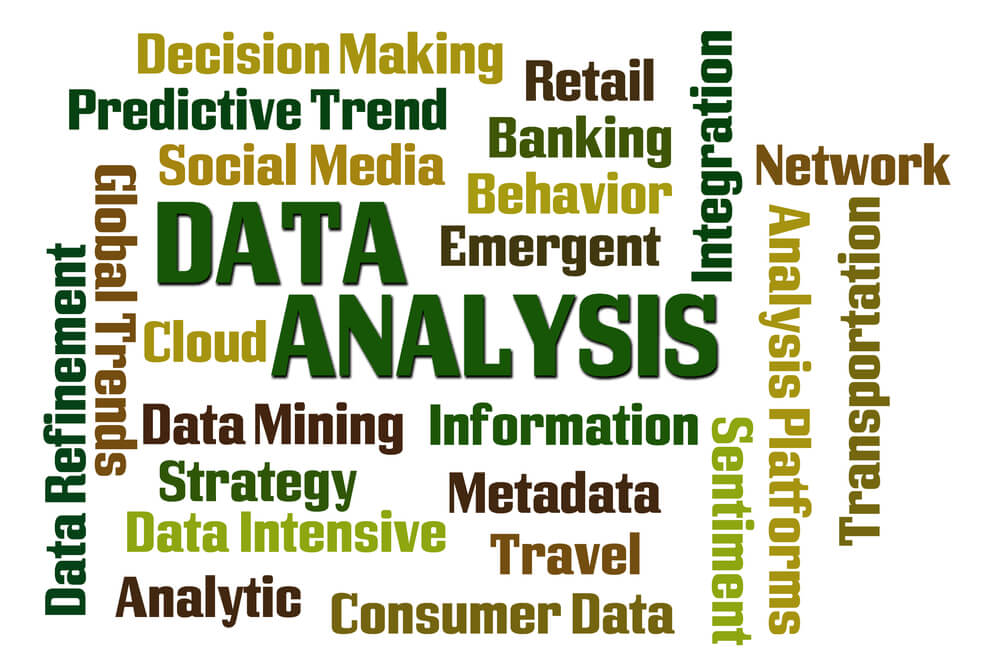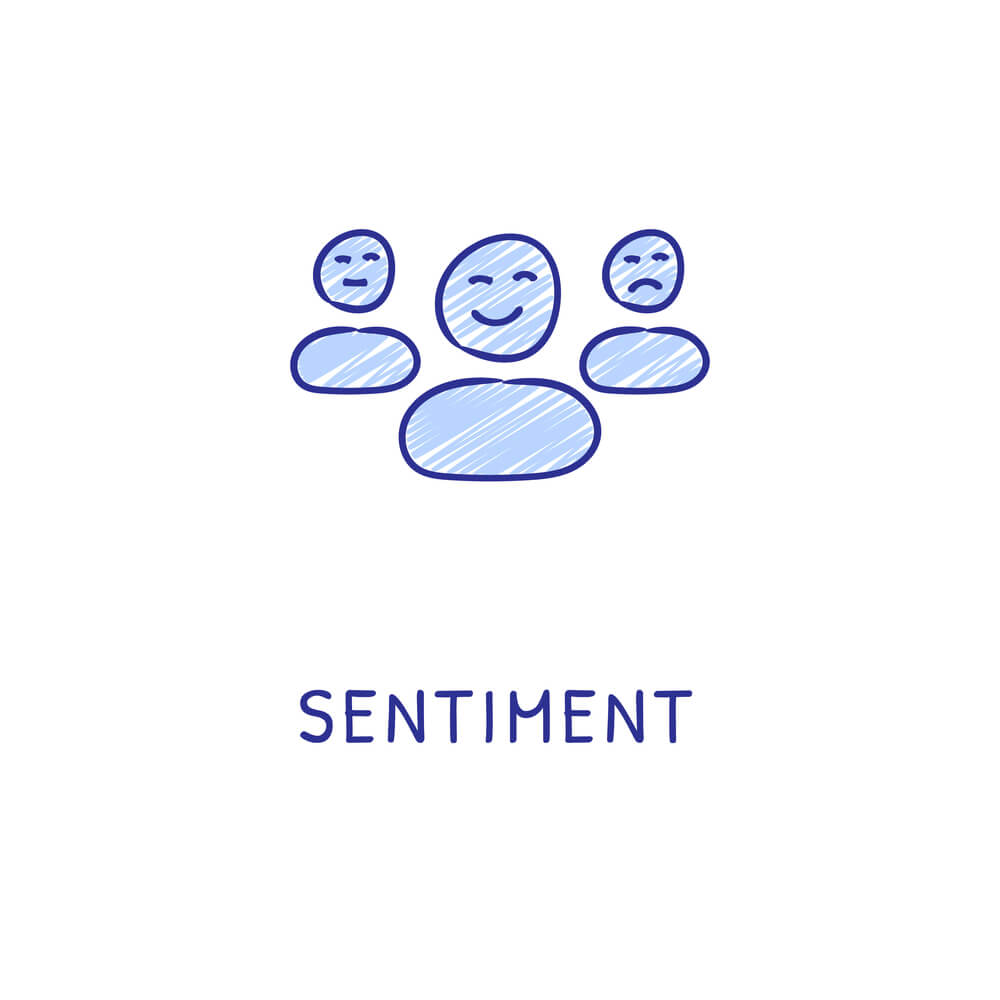Why Business Applies Sentiment Analysis? 5 Successful Examples
Business information can be useful in gaining a competitive edge once you start applying the insights to your brand and processes within the company. Sentiment analysis can help get these insights and understand what your customers are looking for in your product.
To apply it correctly, you have to understand what sentiment analysis is used for and how to do sentiment analysis for the benefit of the cause.
We already looked at the sentiment analysis technology in our previous article and this article will focus on the most prominent sentiment analysis examples.

Sentiment Analysis Examples
Reputation Management – Social Media Monitoring – Brand Sentiment Analysis
Brand monitoring and reputation management is the most common use of sentiment analysis across different markets. No wonder – understanding how the consumers perceive your brand/product/service is equally useful for tech companies, marketing agencies, fashion brands, media organizations, and many others.
In essence, the sentiment analysis application brings additional flexibility and insight into the presentation of the brand and its products. It allows companies to:
- track the perception of the brand by the customers;
- point out the specific details about the attitude;
- Find patterns and trends;
- keep a close eye on the presentation by the influencers.
All this allows us to adjust to the state of things accordingly and give the product a proper presentation.
ELASTIC SEARCH TUTORIAL: DEPLOY, SCAILING, AND MAIN FUNCTIONALITY
Overall, sentiment analysis can be used to:
- Automate media monitoring process and the accompanying alert system
- Monitor mentions or reviews of the brand on different platforms (blogs, social media, review sites, forums, etc.)
- Categorize urgency of mentions according to the relevancy scoring (i.e., which platform, type of user is vital to the brand)
The whole operation consists of two stages:
- At the initial stage, the company reacts to the incoming results and adapts.
- Over time, sentiment analysis can transform the course of action from reacting to managing the perception.
OUTSTAFFING VS. OUTSOURCING VS. MANAGED SERVICES: DIFFERENCES AND BENEFITS
Use case: How KFC is doing it
An excellent example of how to use sentiment analysis for brand building and monitoring is KFC. For a while, KFC was stuck in the past, while the competition was moving ahead and reinventing themselves with the narratives of healthy food and feel-good experiences.
So, instead of trying to establish themselves in the crowded niche, KFC had chosen to use the ubiquitous power of the brand. KFC started riding on the waves of memes and pop culture iconography (most recently by using RoboCop to promote the newest product) to instill the brand’s value proposition.
This approach generates natural traction around the brand that is augmented by the pop culture reference. As a result, users engage with the brand and ultimately are led to engage with the product down the line. You have to react and adapt almost instantly, which is where sentiment analysis kicks in.
THE ULTIMATE MARKETPLACE DEVELOPMENT GUIDE: TECH STACK, FEATURES, AND COSTS
The method combines sentiment analysis in social networks monitoring and campaign management that involves:
- Performance monitoring with aspect-based sentiment analysis to point out the specific elements of the presentation
- Topic mining to extract new ideas and variations.
This creates a loop that perpetuates the campaign’s proceedings.
Due to the nature of the marketing campaign, the users are actively involved in commenting or reacting to the ad content. In turn, this generates further ideas for the development of the campaign.
BEST COURSES FOR DATA SCIENCE RECOMMENDED BY A SKILLED DATA SCIENTIST
The result:
- KFC brand is constantly present in the media landscape and that presence guarantees the steady growth of the reach and ultimately the market share.

Market Research, Competitor Analysis
Apart from brand perception and customer opinion exploration, market research is probably the most prominent field of sentiment analysis application.
It is important to note that sentiment analysis is not the primary tool for market research. However, it can bring an additional perspective on the market and give a couple of handy insights about how the state of things is seen from the ground level i.e. consumers.
In addition to that, you can use a similar approach to analyze the competition and their marketing efforts.
Here’s what you can do with sentiment analysis:
- Gather information across different platforms
- User-generated content (comments, reviews, etc)
- News articles
- Influencer content
- Competitor’s content
- Extract numerous insights on different criteria
- General perception
- Perception of the specific aspect
- Provide results in real-time
- Fill the gaps in business intelligence
Sentiment analysis can elaborate on the needs and demands of the consumers and help to adjust your value proposition so that it would hit all the right marks.
Example: How Apple is doing it
The way Apple presents its products and establishes them on the market is a fine example of sentiment analysis application for the benefit of market research and competitor analysis.
Think about how neatly the product’s strong points fit general pains and disgruntlement of the various segments of the user.
KEY DIFFERENCES BETWEEN DATA LAKE AND DATA WAREHOUSE
For example:
- Bad design – you don’t even need to think when using our stuff.
- Poor privacy – we keep personal data use at an absolute minimum.
- Low battery life – we’ve got resource management tools.
Such things can be pointed out by analyzing the competitors and their movements on the market in general by specific aspects. For example:
- Brand value proposition
- Addressing various issues
- Introducing new features
- Announcing milestones and so on
A combination of this information from several maps out the market situation and allows calculating an additional perspective on how to differentiate and strengthen its value proposition.
The result:
- Apple is a trillion-dollar company because they listen to the customer.

Product Analytics
The use of sentiment analysis in product analytics stems from reputation management. Conceptually, it is very similar to brand monitoring. But instead of brand mentions, it goes for specific comments and remarks regarding the product and its performance in specific areas (user interface, feature performance, etc).
This kind of insight is very important at the initial stages with MVP when you need to try the product by fire (i.e. actual users) and make it as polished as possible.
At this stage, the most basic way to apply sentiment analysis is to gather and categorize feedback for further improvements.
Sentiment analysis algorithm can do the dirty work and show what kind of feedback goes from which segment of the audience and at what it points.
BUSINESS APPLICATIONS OF NATURAL LANGUAGE PROCESSING. 5 PROMINENT USE CASES
Usually, the whole thing is divided between the following types:
- Brand keywords
- Brand-adjacent keywords
- Customer needs
- Customer sentiment
- Competitors analysis (based on similar criteria)
As a result, this can be a significant factor in the product’s successful establishment on the market.
At the later stages, the use of sentiment analysis in product analytics merges with brand monitoring and provides a multi-dimensional view of the product and its brand:
- How the brand/product is perceived by various target audience segments?
- Which elements of the product or its presentation are the points of contention and in what light?
Use case: How Google is doing it
A good showcase of how sentiment analysis application contributes to product improvement can be seen in Google’s output. Let’s take the Chrome browser for example.
Google Chrome’s development team is constantly monitoring user feedback, whether it is direct or indirect (i.e. presented in the open sources, most notably, blogs).
But they are not looking at feedback as a message from the user but rather as a sum of its parts:
- the sentiment itself (positive or negative)
- Mentions of the specific aspects of the product – whether it is scalability, extensions, security, or UI
- Sentiments, wishes, and recommendations regarding the product in general and its specific elements
The result:
- These elements provide an additional perspective on the weak and strong points of the product
- This subsequently contributes to further research and development of the product
CLOUD ELASTICITY VS. SCALABILITY: MAIN DIFFERENCES TO KNOW ABOUT
Voice of the Customer Analysis
Accurate target audience segmentation and subsequent value proposition formulation are amongst the key elements of effective business operation. You need to know where are you aiming at with what.
On the other side of the spectrum, you have to keep the hand on the pulse of your customer in order to remain relevant and keep your product in demand.
In the very center of both activities is an understanding of the “Voice of the customer”.
However, one does not simply capture and study the voice of the customer. It is scattered around the different platforms and presented in a variety of conflicting forms. All this needs to be sorted out nice and clear.
Customer Sentiment Analysis algorithms are capable of capturing and studying the voice of the client with much bigger accuracy.
The process is twofold.
- During Market Research – sentiment analysis can be used to explore target audience segments in general. It can help to define and further specify what particular segment wants and needs, expects from such products, which similar products are preferred or in use in the segment, and so on.
- Regarding the product itself – sentiment analysis can be used to analyze direct and indirect customer feedback from multiple platforms. You can study the experiences customers had with your product and determine what it means for the business.
Example: How TripAdvisor is doing it
A good example of VOC analysis done right is TripAdvisor.
The company applies aspect-based sentiment analysis in order to make the most out of the immense amount of data it generates. The aspect-based approach allows to extracts the viable points regarding customer feedback and the service itself.
As the result, sentiment analysis gives an additional perspective on various parts of the business operation, which allows us to understand what the target audience needs, thinks, feels can be improved, and so on.
Ultimately, this contributes to the further polish of the service and strengthening of customer engagement by providing them with what they need.
HOW ECOMMERCE USES MACHINE LEARNING APPLICATIONS
Customer Support – feedback analysis
Customer Support is one of the marquee elements of sentiment analysis application in real life.
There are several ways sentiment analysis can be implemented:
- Insight into customer’s opinions regarding the product:
1) The general perception of the product – whether it is positive or negative;
2) Aspect-based – regarding specific elements of the product;
3) Reaction to the Service – whether it is effective or not. May also include more detailed analysis regarding particular aspects such as response time or quality of interaction;
- Intent Analysis for process automation – so that routine queries will be handled automatic scenarios, such as frequently asked questions and basic product use information.
- Workflow management and customer prioritization. For example, you have a disgruntled customer – his ticket is prioritized to be processed as soon as possible.
The most prominent example of using sentiment analysis in customer support can be seen in big tech companies.
Just think about how detailed and responsive are the troubleshooting quizzes from Microsoft or Apple products. They are specifically designed to generate as much information from the user as possible.
Its purpose is twofold – it is used to solve an issue and also to give additional insight into the peculiarity of the product use.
As a result, the company can continuously map out the strong and weak points of the product and related services and improve its quality seamlessly.
How to make your IT project secured?
Download Secure Coding GuideRead also: Convolutional Neural Networks Applications
What’s next?
Sentiment Analysis is one of those technologies, the usefulness of which wholly depends on the understanding of its capabilities.
It can be extremely useful if you know how to use it and it can be completely useless if you apply it on something it is not supposed to do.
This article gives several examples of how to do sentiment analysis to the maximum effect and get the most of your data for the benefit of your company.
Need to analyze your customers' emotions?
Write to us